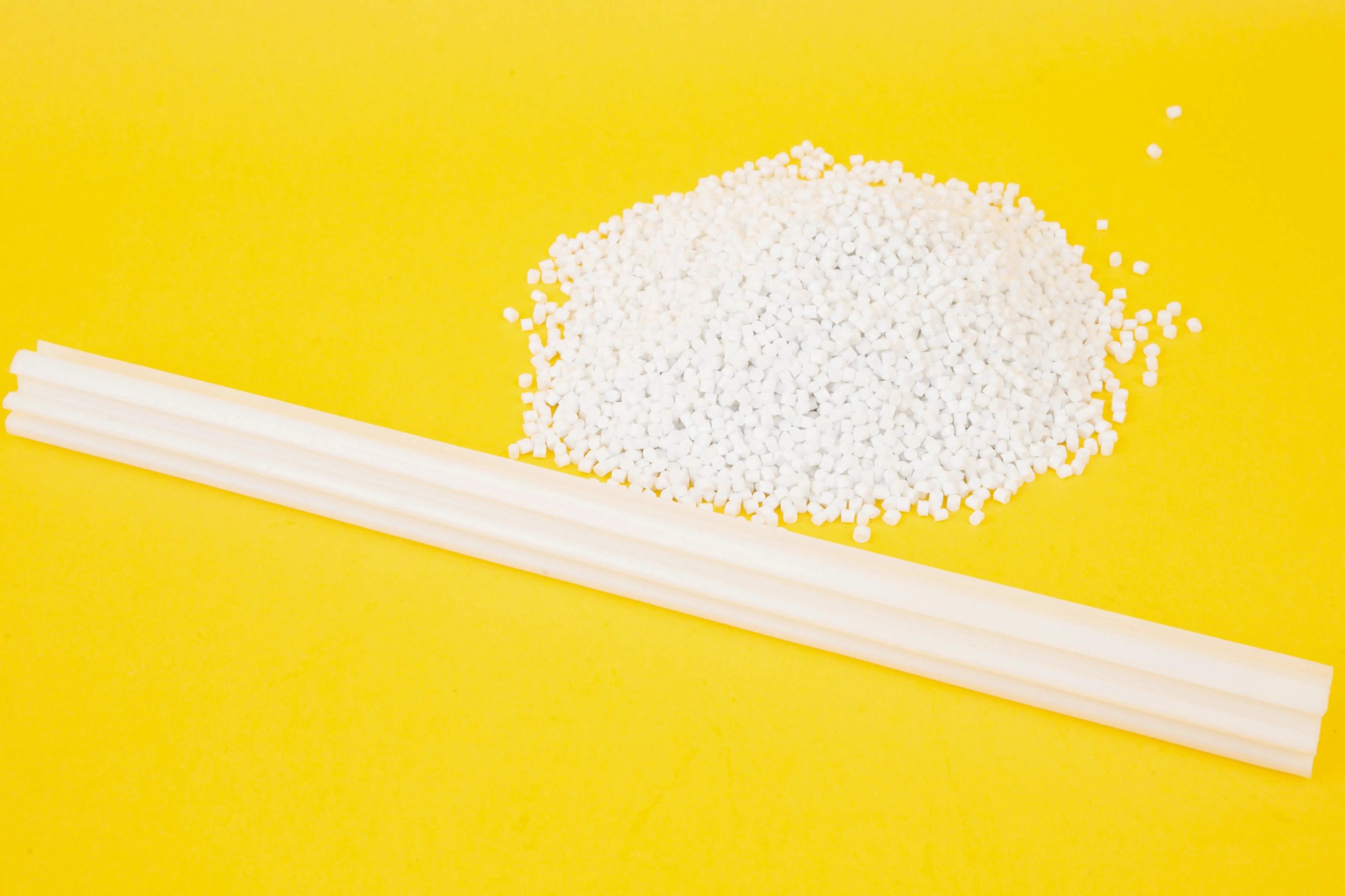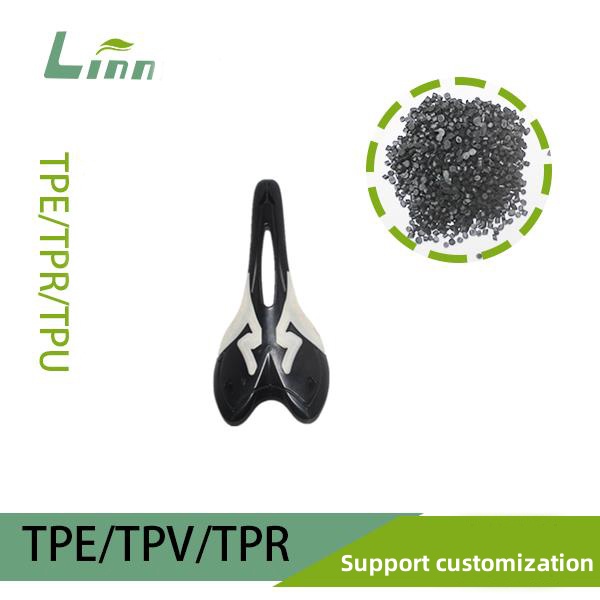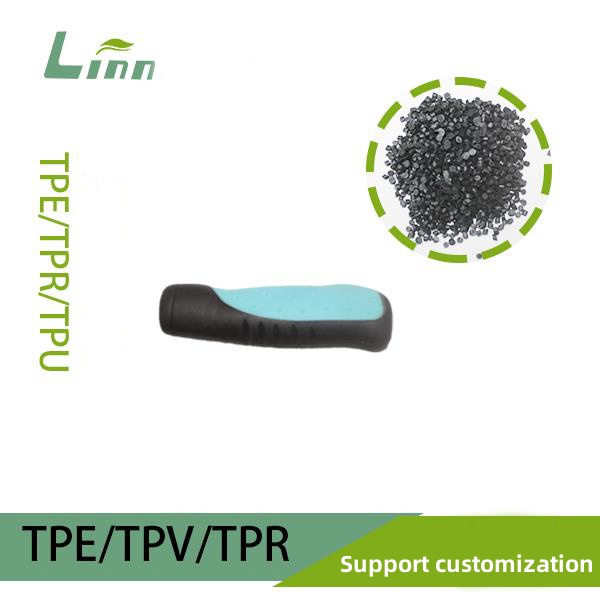Having spent over a decade in the materials industry, working on everything from consumer goods to industrial components, I’ve fielded countless questions about Thermoplastic Rubber (TPR) and its customization. One query that keeps popping up, especially from manufacturers and product designers, is whether white TPR raw materials require fluorescent agents (also known as optical brighteners) to achieve a vibrant, clean white appearance. It’s a valid concern—nobody wants a dull, off-white product that looks cheap or discolored. Drawing from my experience with TPR formulations and color matching, I’ll walk you through the role of fluorescent agents, when they’re necessary, and how to make informed decisions about white TPR.

What Are Fluorescent Agents, and Why Consider Them for TPR?
Fluorescent agents, often called optical brightening agents (OBAs), are chemical compounds that absorb ultraviolet (UV) light and emit it as visible blue light. This process enhances the perceived whiteness of a material, making it look brighter and more vivid. In industries like plastics, textiles, and paper, OBAs are commonly used to counteract yellowing or dullness, especially in white or light-colored products.
For white TPR, the decision to add fluorescent agents depends on the desired aesthetic, application, and performance requirements. TPR, a type of Thermoplastic Elastomer (TPE), is prized for its flexibility, durability, and recyclability. However, achieving a crisp, brilliant white color in TPR can be tricky due to its base polymers (often SBS or SEBS) and additives, which may introduce a slight yellowish tint. Let’s dive into the specifics to understand when and why fluorescent agents might be needed.
The Chemistry of White TPR
White TPR is typically formulated by blending the base polymer with white pigments like titanium dioxide (TiO₂), which provides opacity and a base white color. However, TiO₂ alone may not deliver the bright, “popping” white that some applications demand, especially for consumer-facing products like shoe soles, toys, or medical devices. This is where fluorescent agents come in, enhancing the visual appeal by boosting brightness and masking any underlying yellow tones.
In my early years working with TPR, I noticed that some white TPR batches looked lackluster straight out of the mold. Clients would complain that the material appeared “dingy” or “off-white,” especially under certain lighting conditions. Adding a small amount of fluorescent agent—typically 0.01% to 0.1% by weight—made a dramatic difference, giving the product a clean, almost glowing white finish.
When Are Fluorescent Agents Necessary for White TPR?
Not every white TPR application requires fluorescent agents. The decision hinges on several factors, which I’ve outlined below based on my experience in material specification and product development.
1. Aesthetic Requirements
If your product needs to stand out with a brilliant white appearance—think high-end sneakers, glossy toy components, or premium packaging—fluorescent agents are often a must. They enhance the visual appeal under natural or fluorescent lighting, making the product look cleaner and more professional. For example, I once worked with a footwear brand that insisted on a “snow-white” sole. Without OBAs, the TPR soles looked slightly creamy, but adding a trace amount of OB-1 (a common fluorescent agent) achieved the desired effect.
However, for industrial applications like gaskets or seals, where appearance is secondary to function, fluorescent agents are often unnecessary. The cost of adding OBAs, though small, may not justify the benefit in these cases.
2. Lighting Conditions
The environment where the TPR product will be used plays a big role. Fluorescent agents shine (literally) under UV-rich lighting, such as daylight or fluorescent bulbs, but their effect is less noticeable under incandescent or LED lighting. If your product is destined for retail shelves or outdoor use, OBAs can make it more eye-catching. I recall a project involving TPR phone cases where the client wanted a bright white finish for store displays. Testing under store-like fluorescent lighting showed that OBAs were essential to avoid a dull appearance.

3. Base Material and Additives
The quality of the TPR’s base polymer and additives affects whether fluorescent agents are needed. SEBS-based TPR tends to have better color stability than SBS-based TPR, which can yellow slightly due to oxidation. Additionally, low-quality fillers or oils in the TPR formulation can introduce a yellowish tint, making OBAs more critical. In one project, we switched to a higher-grade SEBS polymer and reduced the oil content, which minimized yellowing and eliminated the need for fluorescent agents.
4. Regulatory and Safety Considerations
For applications like food-contact items, medical devices, or children’s toys, you must ensure that any fluorescent agent used is compliant with regulations like FDA, REACH, or RoHS. Some OBAs, while effective, may not meet these standards due to potential migration or toxicity concerns. I’ve worked with suppliers to source food-grade OBAs for TPR used in kitchen utensils, ensuring both safety and aesthetics.
Pros and Cons of Adding Fluorescent Agents to White TPR
To help you weigh the decision, here’s a table summarizing the advantages and drawbacks of using fluorescent agents in white TPR, based on my observations:
|
Aspect |
Pros |
Cons |
Best For |
|---|---|---|---|
|
Appearance |
Enhances brightness, masks yellowing, creates a premium look |
Effect diminishes under certain lighting (e.g., LED) |
Consumer-facing products (e.g., shoes, toys) |
|
Cost |
Low cost (typically <0.5% of material cost) |
Adds to production cost, especially for high volumes |
Budget-conscious aesthetic applications |
|
Stability |
Stable in moderate conditions, improves perceived quality |
May degrade under prolonged UV exposure, leading to fading |
Indoor or short-term outdoor use |
|
Regulatory Compliance |
Many OBAs are safe for consumer use if certified |
Some OBAs may not meet food-grade or medical standards |
Certified applications only |
Practical Considerations for Using Fluorescent Agents
If you decide to incorporate fluorescent agents into white TPR, here are some tips I’ve learned from years of trial and error:
1. Choose the Right Fluorescent Agent
Not all OBAs are created equal. Common agents like OB-1, CBS-X, and KCB are widely used in plastics, but their performance varies:
OB-1: Excellent for high-temperature processing (up to 280°C), ideal for injection-molded TPR. It’s cost-effective but may yellow slightly over time under UV exposure.
CBS-X: Better for water-based or low-temperature applications, though less common in TPR.
KCB: Offers superior UV stability, perfect for outdoor products but pricier.
I once advised a client to switch from OB-1 to KCB for TPR shoe soles meant for outdoor sports, as the latter held up better under sunlight without fading.
2. Optimize Dosage
Too much fluorescent agent can cause issues like blooming (where the agent migrates to the surface, creating a powdery residue) or over-brightening, which looks unnatural. A dosage of 0.01% to 0.05% by weight is usually sufficient. In one project, we overdid the OB-1 at 0.2%, and the TPR grips looked unnaturally blue under certain lights. Dialing it back to 0.03% solved the problem.
3. Test Under Real-World Conditions
Always test the TPR with fluorescent agents under the lighting conditions your product will face. I’ve seen products that looked stunning in the lab but lackluster in retail stores due to lighting differences. Use a spectrophotometer to measure whiteness (e.g., CIE Lab* values) and ensure consistency.

4. Balance with TiO₂
Fluorescent agents work best when paired with high-quality titanium dioxide. Low-grade TiO₂ can reduce opacity, forcing you to use more OBA to compensate, which increases costs and risks blooming. In my experience, using rutile-grade TiO₂ (as opposed to anatase) with a small amount of OBA delivers the best balance of whiteness and cost.
5. Consider UV Stability
Fluorescent agents can degrade under prolonged UV exposure, causing the TPR to lose its brightness over time. If your product will be exposed to sunlight (e.g., outdoor gear), consider adding UV stabilizers like HALS (Hindered Amine Light Stabilizers) to protect both the TPR and the OBA. I worked on a project for TPR garden hose grips where UV stabilizers extended the product’s aesthetic lifespan significantly.
Alternatives to Fluorescent Agents
If fluorescent agents aren’t suitable—due to cost, regulatory concerns, or UV stability issues—there are other ways to achieve a bright white TPR:
High-Quality TiO₂: Investing in premium, rutile-grade TiO₂ can provide excellent whiteness without OBAs. This approach worked well for a medical device client who needed FDA-compliant TPR without additives.
Polymer Selection: Opt for SEBS-based TPR over SBS, as it’s less prone to yellowing. In one case, switching to SEBS reduced the need for OBAs in TPR toy components.
Surface Treatments: Polishing or coating the TPR surface can enhance perceived whiteness. I’ve seen this used effectively in TPR packaging films to achieve a glossy, clean look.
Color Masterbatch: Use a pre-formulated white masterbatch designed for TPR, which often includes optimized pigments and stabilizers for consistent whiteness.
Real-World Examples from My Experience
Let me share a couple of stories from my time in the industry. A few years ago, I consulted for a company producing white TPR yoga mats. The initial batches had a slight yellowish tint, which customers noticed under gym lighting. We added 0.02% OB-1 to the formulation and paired it with high-purity TiO₂. The result was a crisp, bright white mat that looked premium and received great feedback. We also ensured the OBA was REACH-compliant, as the mats were sold in Europe.
In another case, a client making TPR shoe soles for outdoor use wanted a bright white finish but was concerned about fading. We tested KCB with UV stabilizers and found it maintained whiteness after 500 hours of UV exposure testing, far outperforming OB-1. The soles not only looked great but also held up in harsh conditions, boosting the brand’s reputation.
Environmental and Safety Notes
Fluorescent agents are generally safe when used within recommended limits, but their environmental impact depends on the specific compound. Some OBAs, like CBS-X, are biodegradable, while others may persist in the environment. For eco-conscious projects, I always recommend checking the OBA’s Material Safety Data Sheet (MSDS) and opting for biodegradable or low-impact options.
From a safety perspective, ensure the fluorescent agent is compatible with your application. For example, food-grade TPR for utensils or medical-grade TPR for catheters must use OBAs certified by regulatory bodies like the FDA or European Food Safety Authority (EFSA). In my work, I’ve always prioritized suppliers who provide detailed compliance documentation to avoid regulatory headaches.

How to Decide: A Practical Checklist
Here’s a quick checklist I use when deciding whether to add fluorescent agents to white TPR:
Is brightness critical? If the product’s appearance is a key selling point, OBAs are likely necessary.
What’s the lighting environment? OBAs are most effective under UV-rich lighting like daylight or fluorescent bulbs.
Are there regulatory constraints? Ensure the OBA meets safety standards for your application (e.g., FDA, REACH).
Will the product face UV exposure? Choose UV-stable OBAs or pair them with stabilizers for outdoor use.
Is cost a factor? If budget is tight, high-quality TiO₂ or SEBS-based TPR may suffice without OBAs.
Final Thoughts
Deciding whether to add fluorescent agents to white TPR raw materials boils down to balancing aesthetics, performance, and compliance. In my years working with TPR, I’ve seen how a small tweak—like adding 0.01% OB-1 or choosing a UV-stable OBA—can transform a product’s look and market appeal. However, it’s not a one-size-fits-all solution. By understanding your product’s requirements, testing under real-world conditions, and selecting the right additives, you can achieve a brilliant white TPR without unnecessary costs or risks.
Whether you’re a manufacturer aiming for a premium look or a designer curious about material options, I hope this deep dive into fluorescent agents and white TPR helps you make confident choices. If you’re grappling with a specific TPR project, the Q&A below might address your next steps.

Related Questions and Answers
Q: Are fluorescent agents safe for TPR used in children’s toys?
A: Yes, if the OBA is certified for safety under standards like REACH or EN 71 (European toy safety). Always request compliance documentation from your supplier to ensure the agent is non-toxic.
Q: Can fluorescent agents cause TPR to fade over time?
A: Some OBAs, like OB-1, may degrade under prolonged UV exposure, leading to fading. For outdoor applications, use UV-stable agents like KCB or add HALS stabilizers.
Q: How much do fluorescent agents cost to add to TPR?
A: The cost is typically low—about 0.2% to 0.5% of the material cost—but depends on the OBA type and dosage. High-end agents like KCB are pricier but offer better performance.
Q: Can I achieve a bright white TPR without fluorescent agents?
A: Yes, using high-quality rutile TiO₂, SEBS-based TPR, or surface treatments can deliver excellent whiteness, though OBAs often provide a more vibrant finish.
Q: Do fluorescent agents affect TPR’s mechanical properties?
A: At recommended dosages (0.01%–0.1%), OBAs have negligible impact on TPR’s elasticity or durability. Overuse, however, can cause blooming or affect surface quality.





